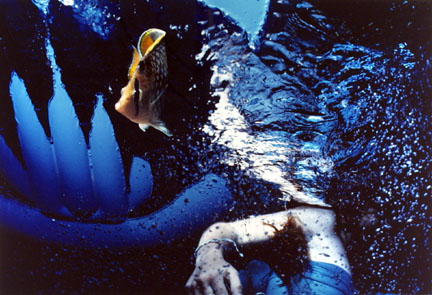(Another) Farewell to SpaceSpace: the week in dance
This week Lightsey Darst reports back from the end-of-year closing of SpaceSpace, a third incarnation of the ad hoc dancer-run performance space founded in the nineties by Paula Mann, Shawn McConneloug and Georgia Stephens.

ON DECEMBER 28, A SMALL GROUP BID A QUIET FAREWELL TO SPACESPACE. I’ve written before about this endearingly-named rehearsal space and theater on the southern edge of downtown, founded in the nineties by Paula Mann, Shawn McConneloug, and Georgia A. Stephens, and about how SpaceSpace has already been parted with twice: once when the original SpaceSpace building became a parking lot, and once when the dancers gave up their hopes of renovating the space as a fully-funded theater and let their lease go. If this confuses you—How can a space become a parking garage and continue to exist?—then you have yet to plumb the strange story of dance spaces, their charmed and cursed courses through warehouse pasts, building codes, changes of ownership, demolition or reclamation. (This time around, the dancers have been evicted because the landlord is renovating the building for offices.)
Fundamentally, a dance space is a floor. The one at SpaceSpace, narrow boards polished to a scratched caramel sheen, was hung from the ceiling, McConneloug explained, the holy grail to dancers who are always in search of a ground more like a cloud (for easier landings and longer-lasting shins). NO SHOES, in crooked electrical tape letters, marked the floor’s corner, a directive most people ignored on this last night. A really good memorial would be the geographical coordinates of this space, and then you could plot this three-dimensionally against all the other dance spaces in the city, past and present, back to meeting grounds hallowed by beating feet hundreds of years ago. I wonder how much of the space in the Minneapolis would be shaded in on such a map.
Jeff Millikan, the photographer who’s been SpaceSpace’s main tenant for the past ten years or so, and who generously shared the space with dancers (Hijack, Deborah Jinza-Thayer, Chris Yon, Chris Schlichting, BodyCartography, Rosy Simas, and others), got asked to say a few words. He didn’t know anything about SpaceSpace when he rented the downtown space as a studio, and yet he couldn’t, somehow, inhabit all of the room. “There was an energy I could not penetrate”—which turned out to be (once he learned SpaceSpace’s story) the dance floor. He got choked up talking about it.
“It had a vibe, right? Spaces have vibes,” McConneloug said. Later, she walked away from everyone else, out into the middle of the dark floor. I saw her framing the crowd, moving a bit to her left to get the symmetry right. She too was a little choked up, but smiling. Rosy Simas did a short dance with a lot of inner space in it—molding, with her arms and body, the charged air. Deborah Jinza-Thayer talked about a dead bird in the window, a flood, a squirrel in the fuse box. Olive Bieringa and Otto Ramstad’s daughter ran back and forth between them—“measuring the space,” Bieringa commented.
Further back in the space you could find Millikan’s art, prints tacked to the walls. I’d seen the honeycombs and taxidermy before, but another series was new to me: brilliant fish and people in matching clothes tangled in dark water, seen from wild angles, swirls of scarves, hands, parrotfish, flashes of skin swimming or flying or plummeting away. I couldn’t tell what was happening or which way was up; there was no floor.
Other than SpaceSpace, the world didn’t end in 2012, unless very quietly, with a stealthy overnight rebuilding. On December 31 there was one dance class at the Cowles Center, adult/advanced ballet. No surprise there: ballet dancers are diehards. Anyway, they know they can’t stop: it’s not dance if you’re not in motion.
______________________________________________________
About the author: Originally from Tallahassee, Lightsey Darst is a poet, dance writer, and adjunct instructor at various Twin Cities colleges. Her manuscript Find the Girl was recently published by Coffee House; she has also been awarded a 2007 NEA Fellowship. She writes a weekly column on dance for mnartists.org.